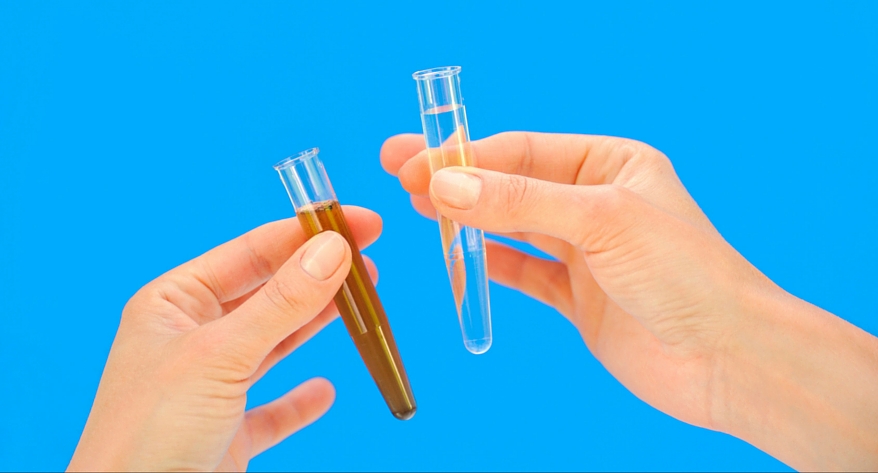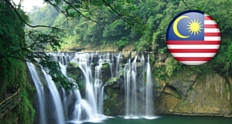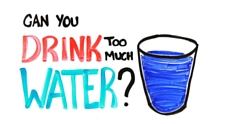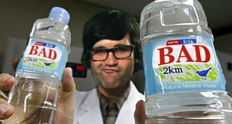There are a number of chemical contaminants present in most commercial drinking water. In the United States alone, there's very few brands that have consistently been able to pass the contaminant level testing completed by many state governing bodies over the last several years.
A recent in-depth study by the National Resources Defense Council (NRDC) over a four-year period (view study overview) found several frightening, yet not entirely unexpected results from the bottles they tested and multitude of other researchers they consulted.
The scary reality of the testing was that 26 of the 103 bottled water brands that underwent testing were found to be in dangerous violation of US FDA regulations for clean bottled drinking water.
Table of contents
- Startling Discoveries From NRDC Study on Contaminated Bottled Water
- Stop Being a Victim
- Steps You Can Take to Find Safe Bottled Drinking Water
Startling Discoveries From NRDC Study on Contaminated Bottled Water
Just a few of the dangerous organic and inorganic present in the over 1,000 samples tested included unacceptable levels of several types of dangerous bacteria including coliform bacteria, arsenic, cryptosporidium, plastic, plasticizing compounds, nitrate, chloroform, phthalates (DEHP), fluoride, xylene, toluene, methylene chloride, inorganic compounds, etc., etc.
The list goes on and on. As a consumer, it's important for you to understand what these and other dangerous bacteria and chemicals, which can be present in all bottled and otherwise manufactured products, can have on yours and your family's health.
They're all bad. Federal regulations in most countries aren't strict enough to keep you safe from manufacturers who choose questionable water sources and/or use poor manufacturing processes.
Germany also recently released a shocking study that found some 25,000 chemicals in the bottled water they put under the microscope (view study overview).
Stop Being a Victim
There's so much that goes into finding a trusted water bottle brand. Often, you'll have to seek out manufacturers who source their water from deep underground, where the most potent filter known to man (i.e. nature) does its best work.
For instance, One Water natural spring mineral water, comes from deep under the Malaysian rainforest, where a series of unique aquifers naturally clean the water, leaving little purification needed before bottling.
The water source can often be a huge source of contamination. However, it's often poorly maintained equipment and unethical bottling procedures that lead to the types of chemical contamination found in the NRDC and German studies mentioned earlier.
As a consumer, you don't need to become an unwitting victim of poor quality control processes. If the water you're drinking is making you sick instead of hydrating, detoxifying and revitalizing your mind and body, you're literally paying these companies to make you ill.
Steps You Can Take to Find Safe Bottled Drinking Water
We could just suggest you switch to One Water and rest assured we'd never allow natural or unnatural contaminants to find their way into your drinking water...
However, here are a few great tips you can use to “filter out” the poorly filtered and contaminated brands and avoid laying your money down on inferior, dangerous drinking water.
First, the basics:
- Avoid bottled water that's been stored in direct sunlight (choose water sold in sealed cardboard boxes or contained in non-transparent glass bottles for the most assurances).
- If a safety seal isn't present, don't drink it.
- Stay away from brands that don't list the bottling source on the label (and if the source doesn't say “Spring” don't buy it either.)
- Check the expiration date before purchasing (this is especially important for plastic bottles, as the bottles begin to break down after two years and release BPA into the water after this time.)
Next, you need to find out how the water was treated for bacteria and inorganic particulates prior to bottling. There are a few methods that are great for killing bacteria, while only one can do both jobs safely: Filtering through an absolute 1 micron (or smaller) filter.
Other effective methods include reverse osmosis (RO) and distillation. Unfortunately, both methods completely strip the water of all the health-boosting dissolved minerals it contains, which we've detailed in-depth in previous posts.
Some manufacturers will post their sources and quality control processes right on their websites (here's ours), along with recent purity reports. Others should be more than willing to share this information with you simply by contacting them via phone or a contact form on their website.
Basically, if you're in doubt of the purity of the bottled water you're drinking and can't get the answers you're looking for from the manufacturer, it's best to avoid that brand altogether.
It's simply not worth risking your health to save a few dollars, or to drink something simply because it's considered trendy!





